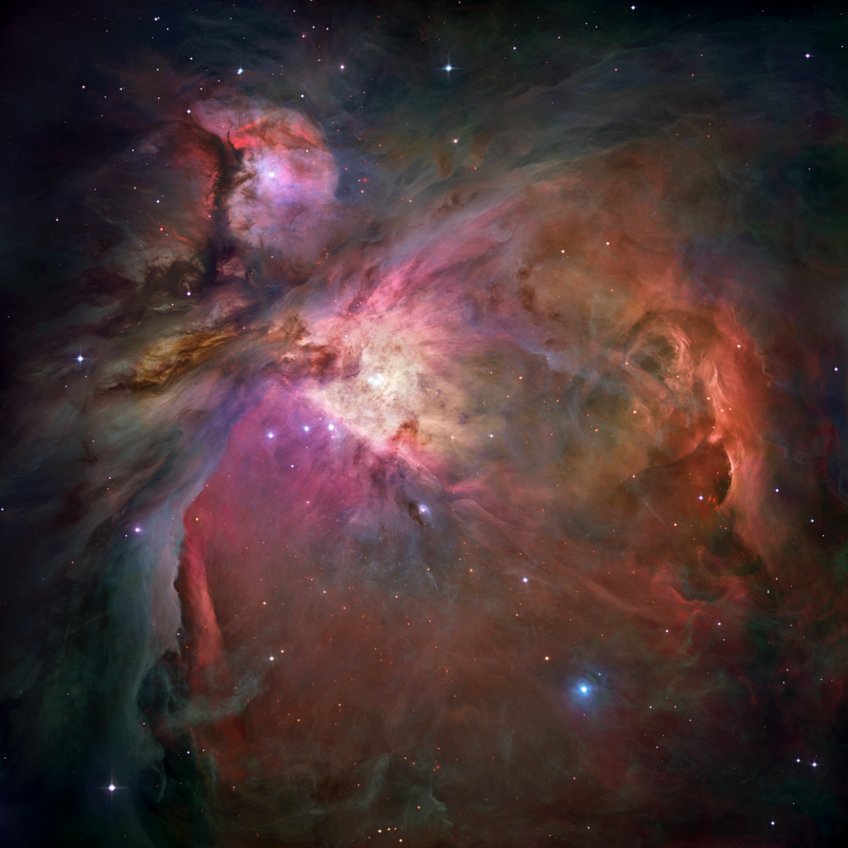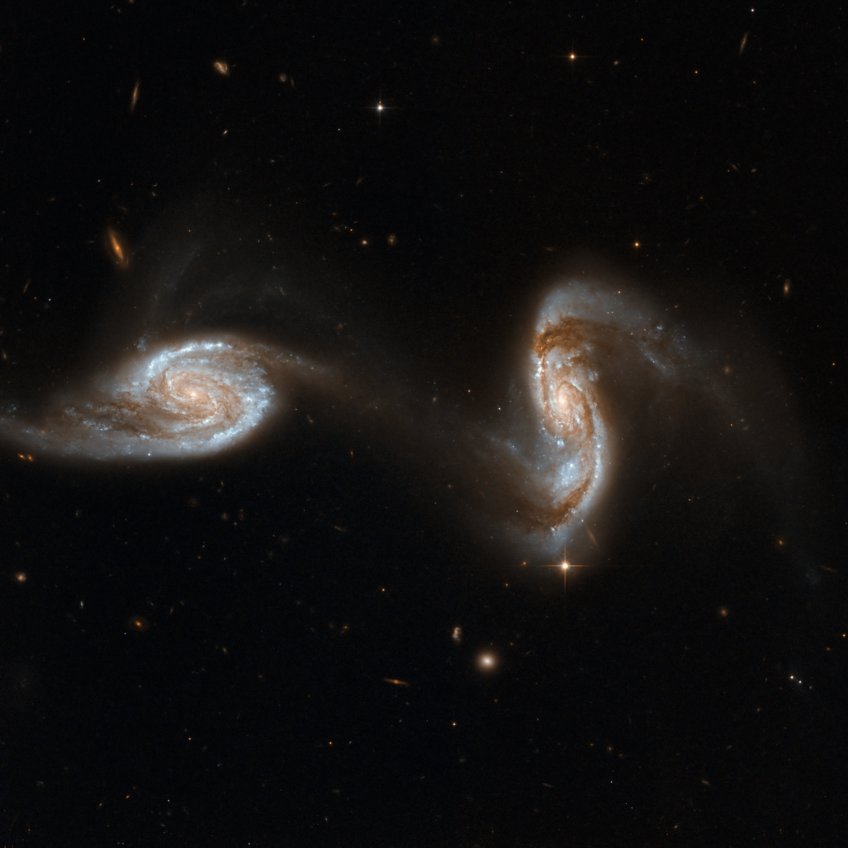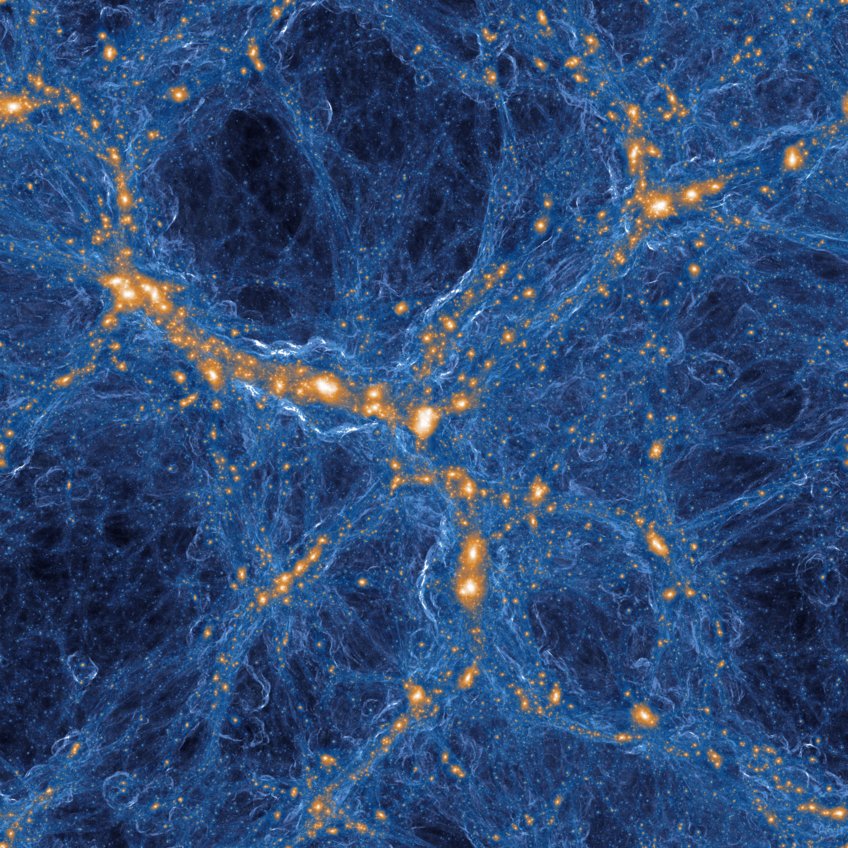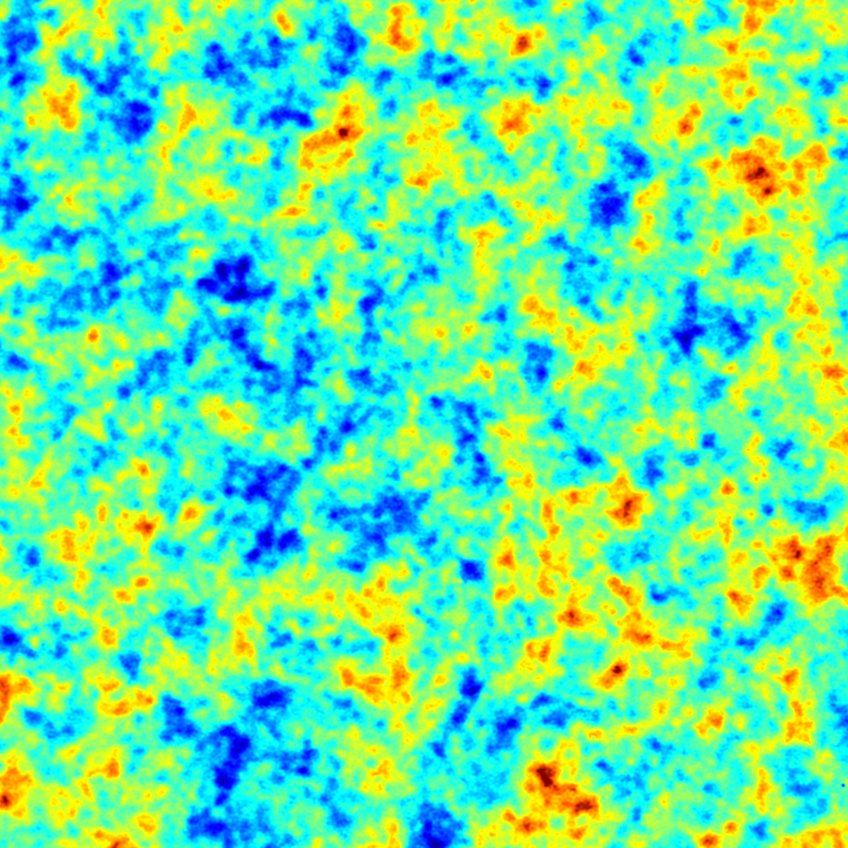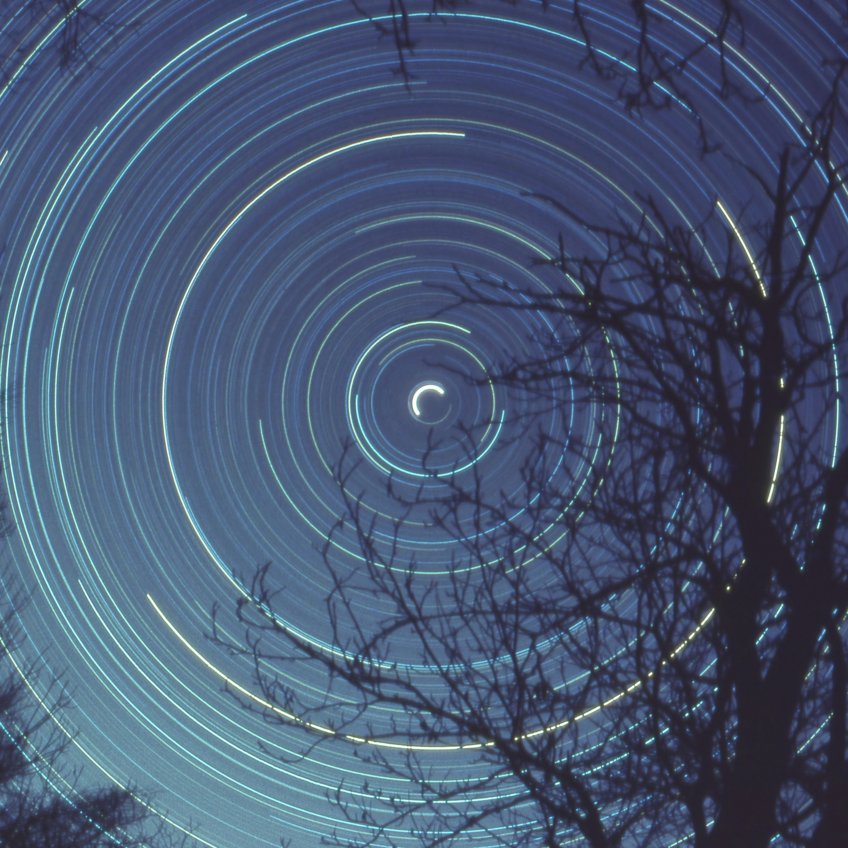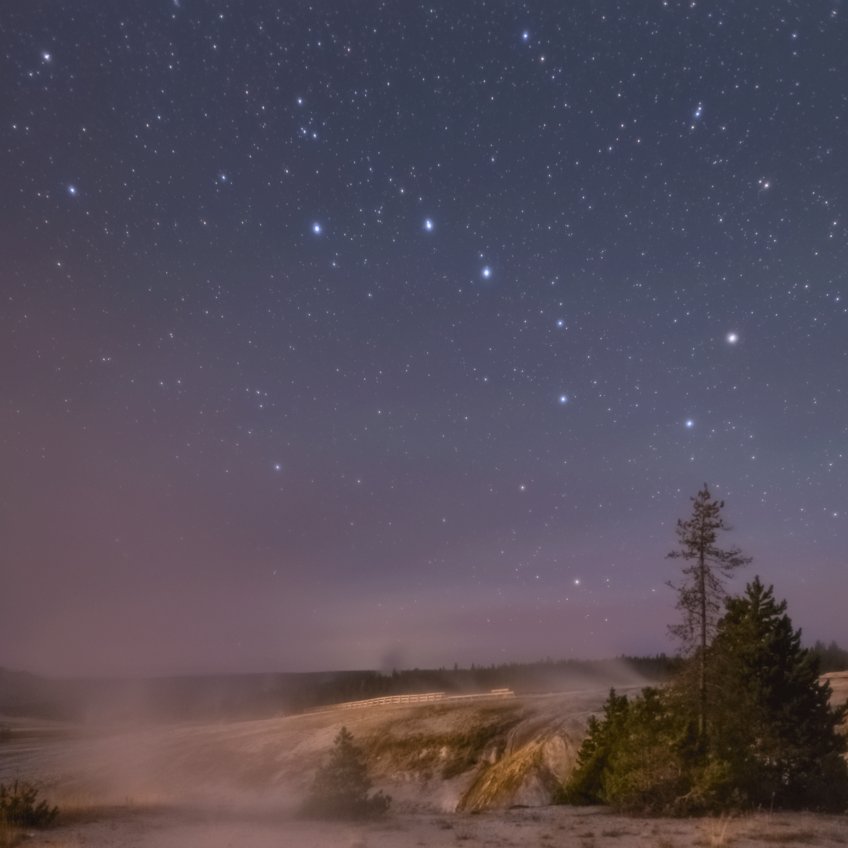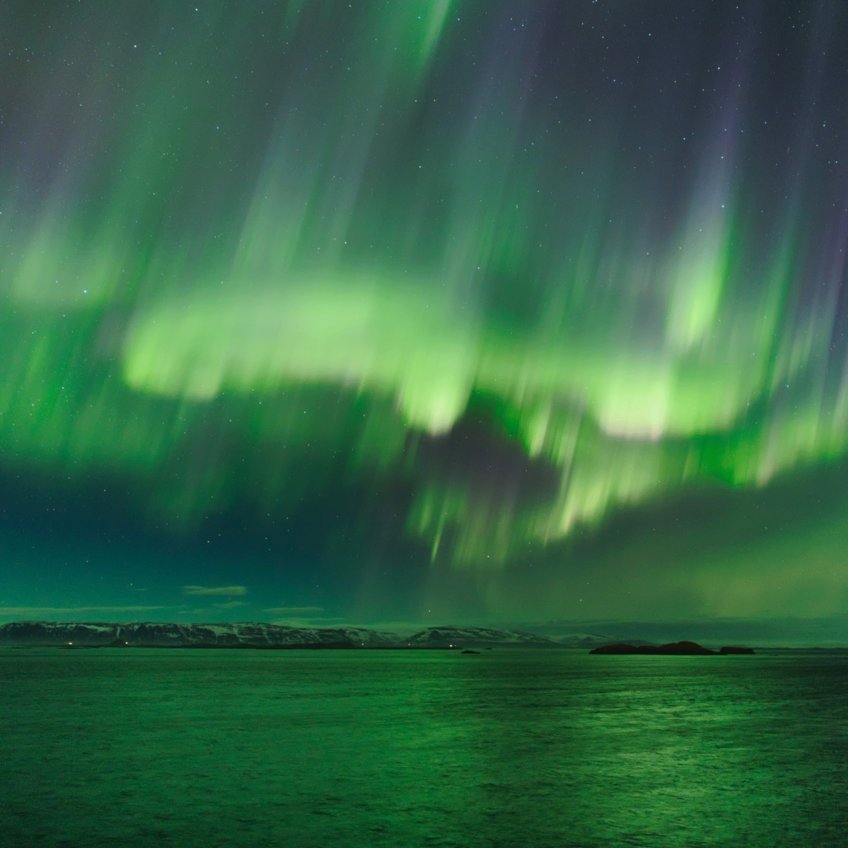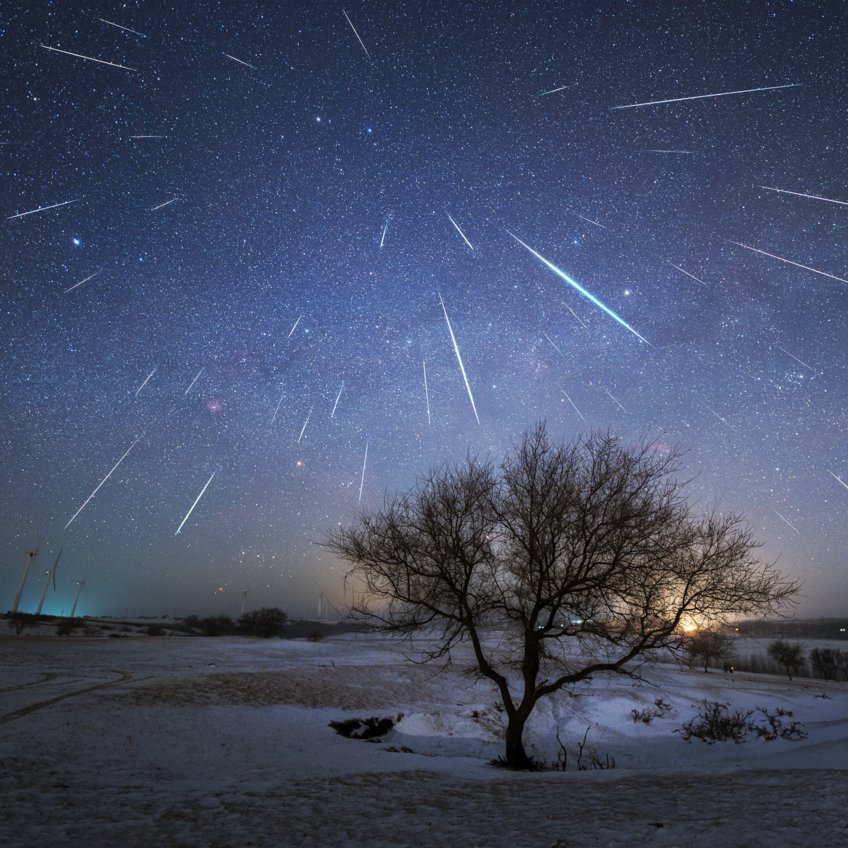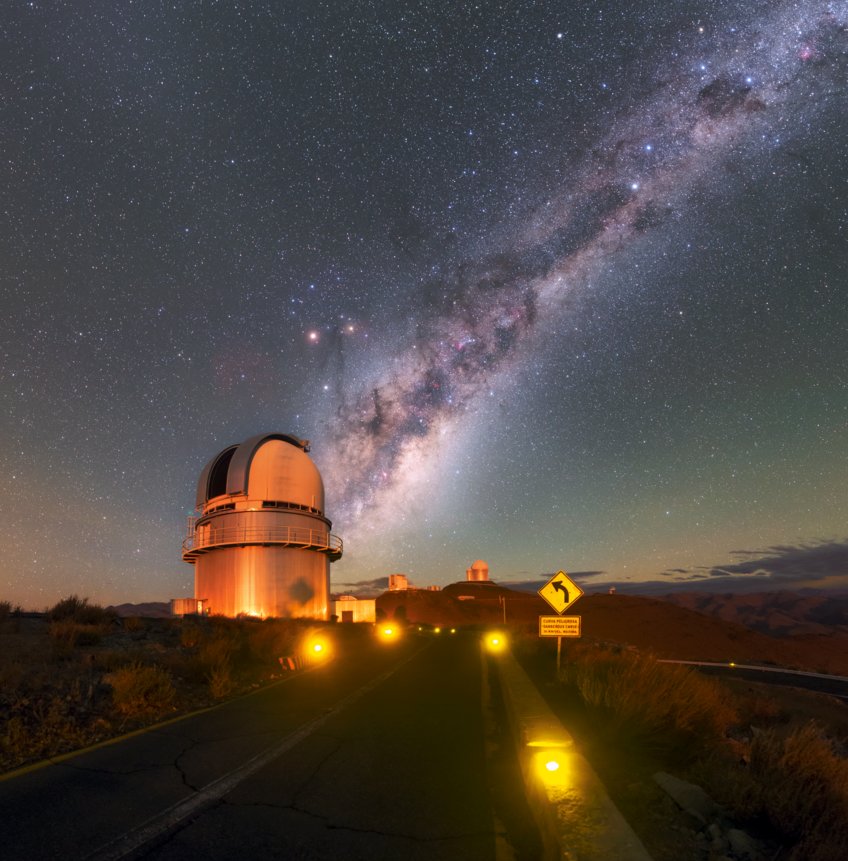Lightboxes in the HdA building
The HdA building features a chain of backlit images. Here, we show and describe those images.

The image "Earthrise" was taken by astronaut William Anders at Christmas during the Apollo 8 mission, the first time humans orbited the Moon. It shows the Earth as a small, vulnerable-looking blue marble surrounded by a black, hostile nothingless. To this day, it is considered one of the 100 most influrential images of all times (Time magazine).
This photo was not planned: as NASA records show, the astronauts were actually supposed to photograph the surface of the moon to find a suitable landing site for a later lunar landing. But suddenly the astronauts saw the Earth rising behind the moon. "Oh my God! Look at the view over here!", Anders shouted to his colleagues. "The earth is rising. Wow, it's beautiful!". A colour film was quickly inserted and this famous photo was taken.
Wikipedia
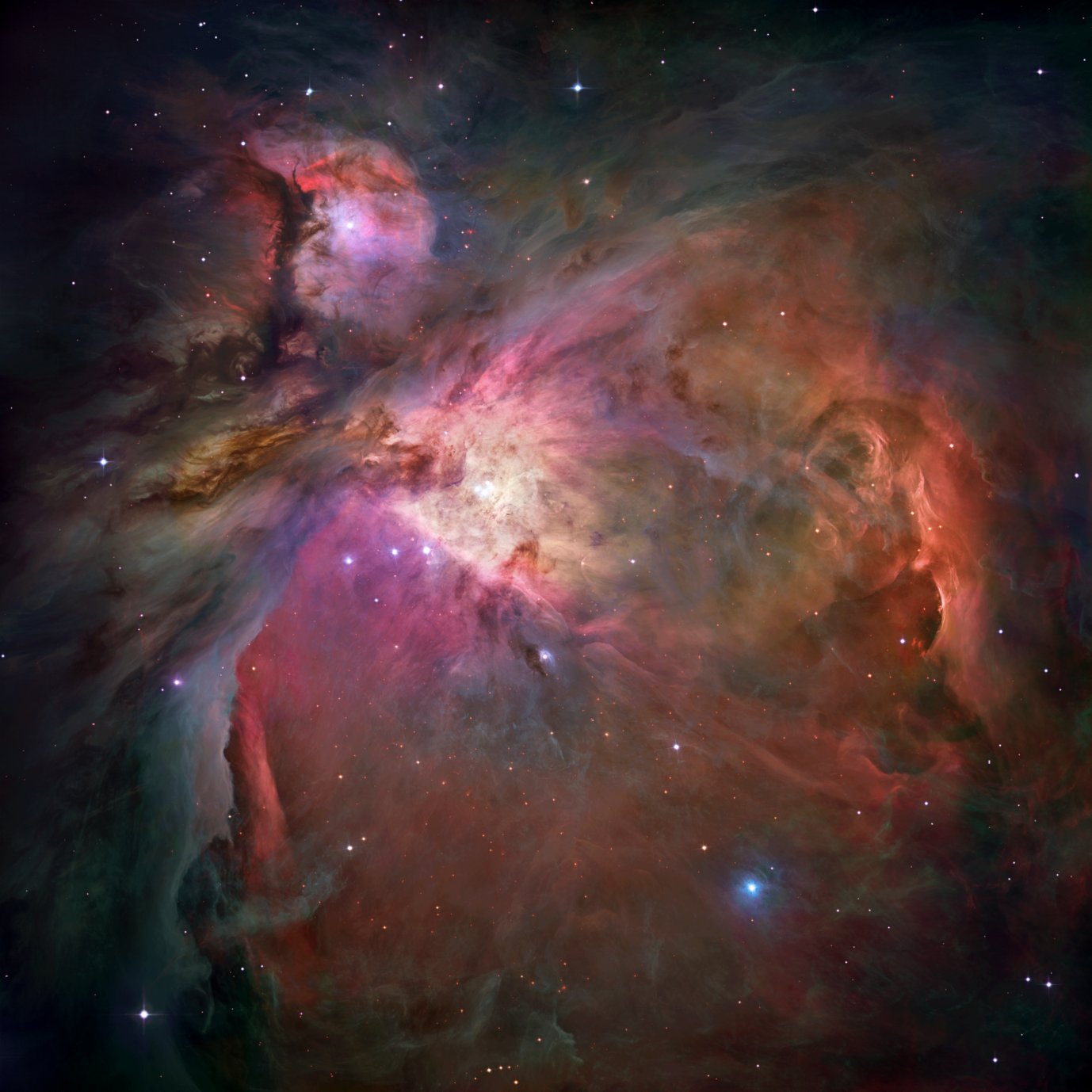
The Orion Nebula is a luminous gas nebula located south of the eye-catching belt of three stars in the constellation Orion. At a distance of about 1350 light-years, M42 is the closest star-forming region to Earth where massive stars also form. Such stars emit high-energy radiation such as ultraviolet light, which causes gas to glow in a similar way to a neon tube.
The nebula gets its colours from the different substances that make up the nebula (e.g. hydrogen, oxygen, nitrogen). The embedded dark areas are condensations of cold gas and dust from which new stars are formed. The image was taken by the Hubble Space Telescope.
Original Image (ESA)
Wikipedia
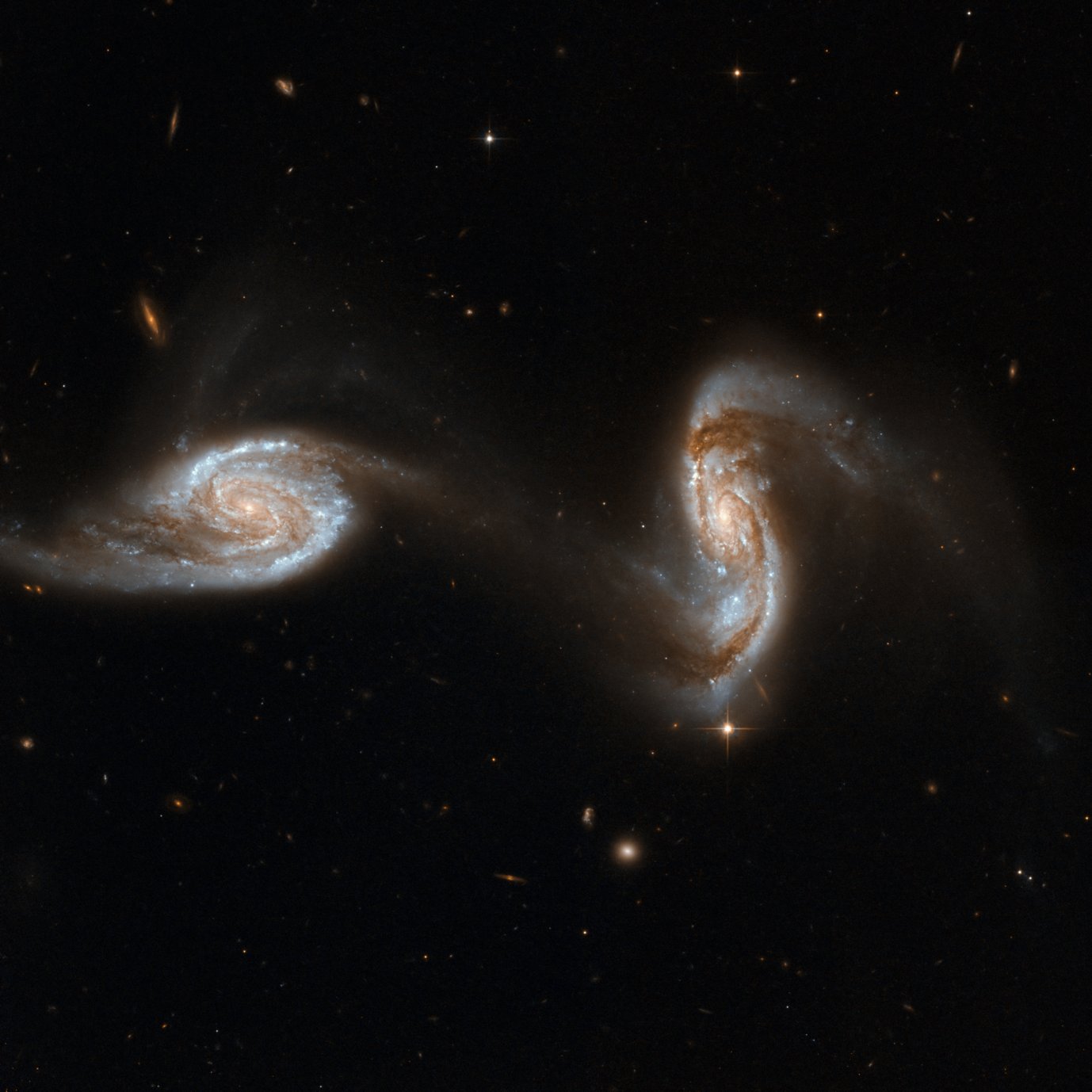
Arp 240 is the name of this collision between the galaxies NGC 5257 (left) and NGC 5258 (right). The image, taken by the Hubble Space Telescope, shows the interactions between these galaxies via a barely visible bridge of gas and stars. The forces of this encounter also lead to distortions of their spiral structures. Such mergers of two spiral galaxies usually result in an elliptical galaxy. The time scales for this are astronomical: it is currently assumed that the first encounter of this particular galaxy dance took place around 250 million years ago.
Some more distant galaxies can also be seen in the background. Bright foreground stars, such as the one directly below the galaxy on the right (NGC 5258), are from our Milky Way. Their light is bent into a plus-sign shape by the telescope's structure (the support of the secondary mirror), a so-called diffraction spike.
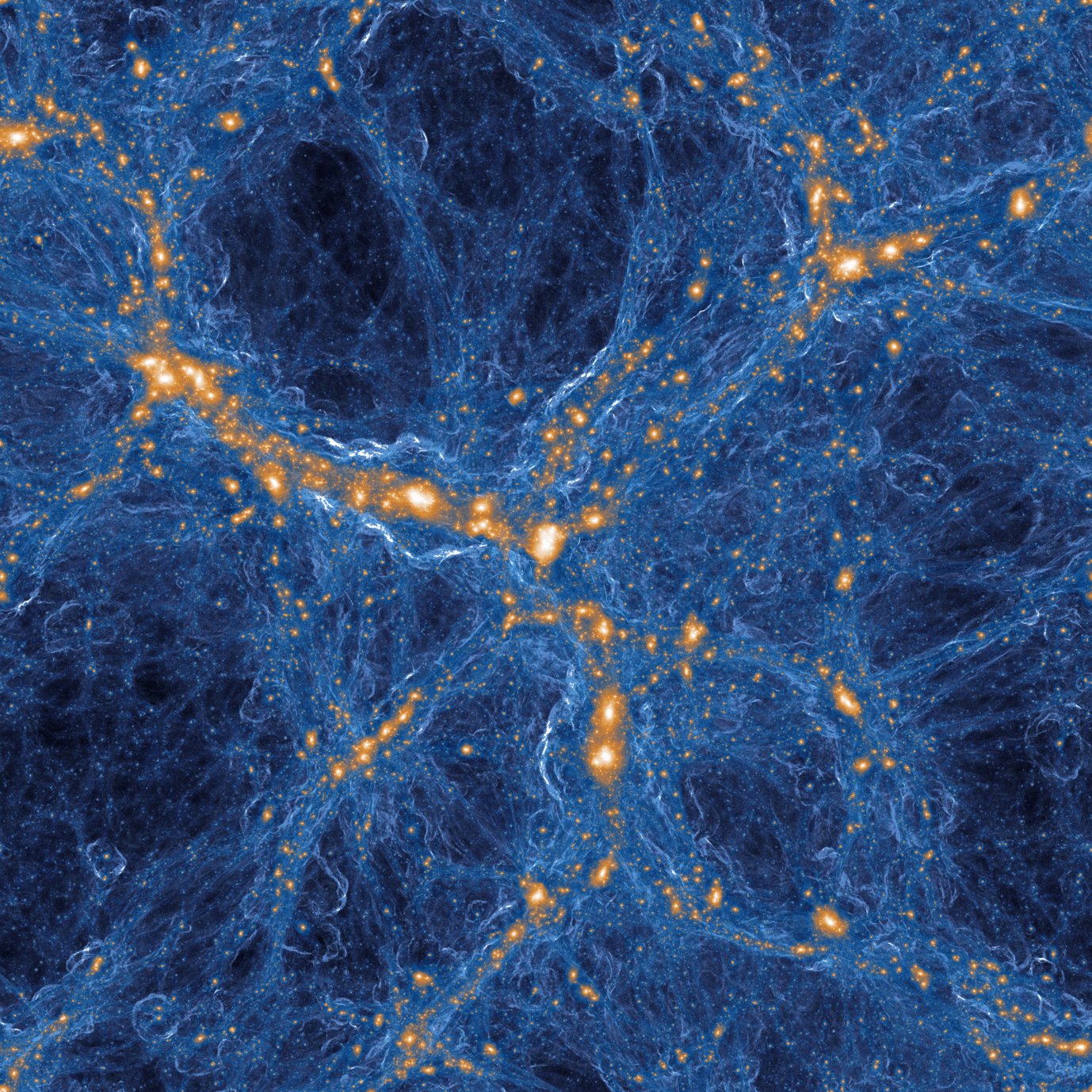
Shortly after the Big Bang, 13.8 billion years ago, the universe was essentially structureless and homogeneous. Only small density fluctuations were present: In some regions, the density was fractionally higher, in some lower than average. Over the course of millions and billions of years, these fluctuations gave rise to large-scale structures: regions with a slightly higher density exerted a slightly higher gravitational force, attracting correspondingly more matter and thus increasing their density further. With the help of elaborate computer models, this evolution can be simulated, and our image shows the result of one such simulation, which is called TNG100. Most of the matter in the universe is in the form of so-called dark matter, which only interacts with itself and with other matter via gravity. This dark matter gathered in bigger or smaller halos with diameters between some thousand and some million light years. In the above false-color picture, the Dark Matter density shown in yellow-white, with higher densities corresponding to the whitish regions. Within those Dark Matter halos, conventional matter gathered: ordinary atoms, of the kind which make up all the matter we see around us in everyday life. Within the halos, this ordinary matter organised into galaxies with their stars, surrounded by gas. Some of the evolution of those galaxies was downright dramatic. For instance, there might have been "starburst phases" where a galaxy formed an inordinate amount of stars in a very brief time. Also, such galaxies contain supermassive black holes in their centers, and when matter falls onto those supermassive black holes, some of the matter is typically ejected, accompanied by a burst of radiation. Both starburst phases and active phases of the supermassive black hole would have ejected hot gas from a galaxy. When that hot gas met the surrounding cool interstellar gas, the collision would produce a hot shock front. Such shock waves are shown in blue in this false-color visualization. The image thus shows on the one hand the structures that formed by collapsing under their own gravity (dark matter, yellow-white), and on the other hand the gas shock waves around those structures (gas, bluish), which bear witness to the evolutionary history of the galaxies contained in the halo.
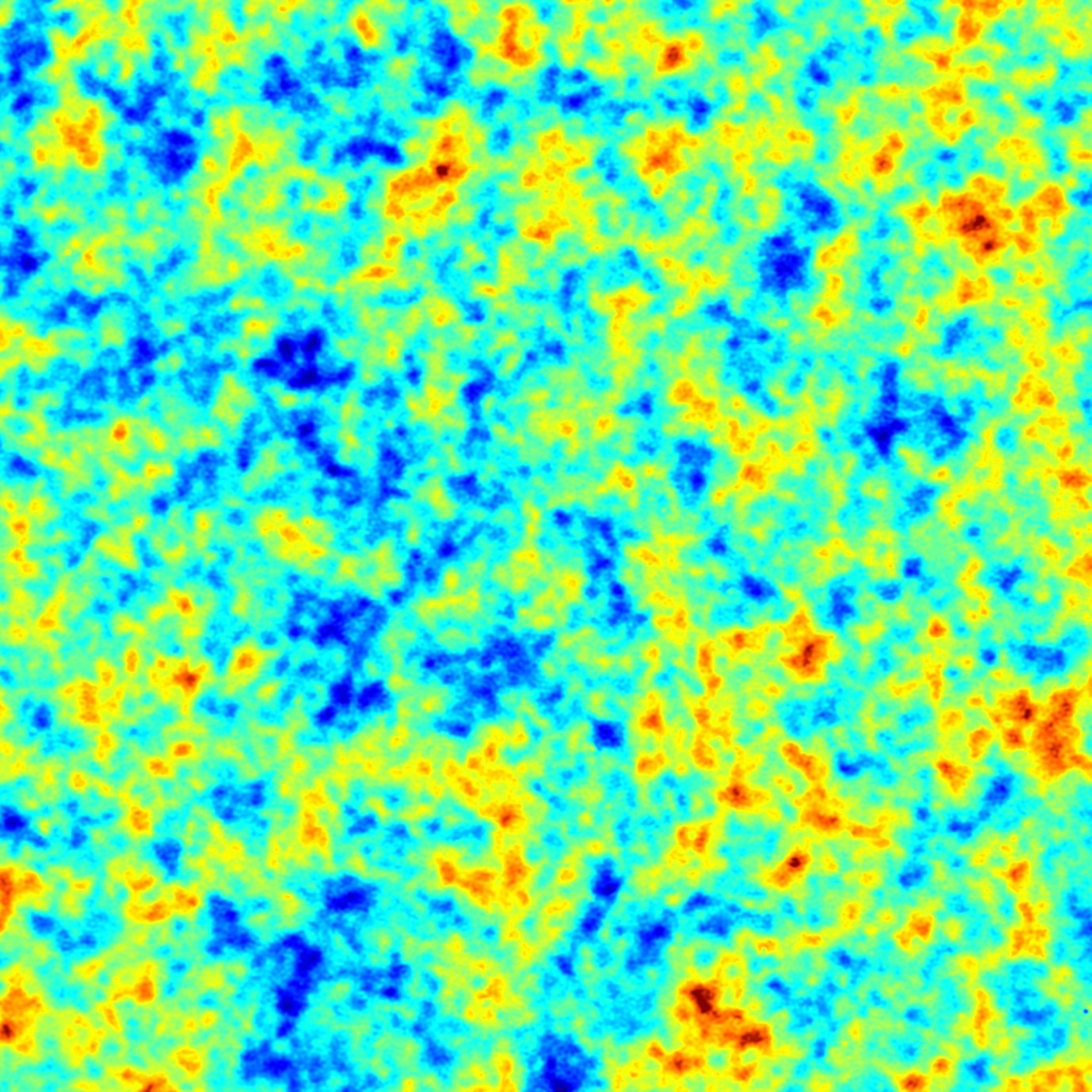
In the big bang phase, 13.8 billion years ago, our universe was filled with a dense, hot plasma of elementary particles, interspersed with thermal electromagnetic radiation. Only about 380,000 years after the big bang had this plasma cooled down enough for stable atoms to form in large quantities. The thermal radiation was then able to propagate freely in space. It is still observable today: Wherever we can look far enough into space to see regions so distant that their light took 13.8 billion years to reach us, we see this cosmic background radiation. As a side-effect of cosmic expansion, it has since shifted to much longer wavelengths, and reaches us today mostly in the form of microwave radiation. This false-color image shows the tiny temperature differences of that microwave background radiation, observed with ESA's Planck satellite. Red regions are a few hundredth of thousandths of a degree warmer, blue regions a few hundredth of thousandths of a degree cooler than the average temperature of the background radiation, 2.7 degrees above absolute zero. These temperature fluctuations reflect the tiny density fluctuations in the early universe. Over the last 13.8 billion years, those density fluctuations have grown into the large-scale structures we see around us - the filaments of the cosmic network, along which numerous galaxies are strung. In a sense, then, this is a "baby picture" of our universe. Specifically, the image shows the intensity of the cosmic background radiation in a square section of the sky, 20 degrees a side.
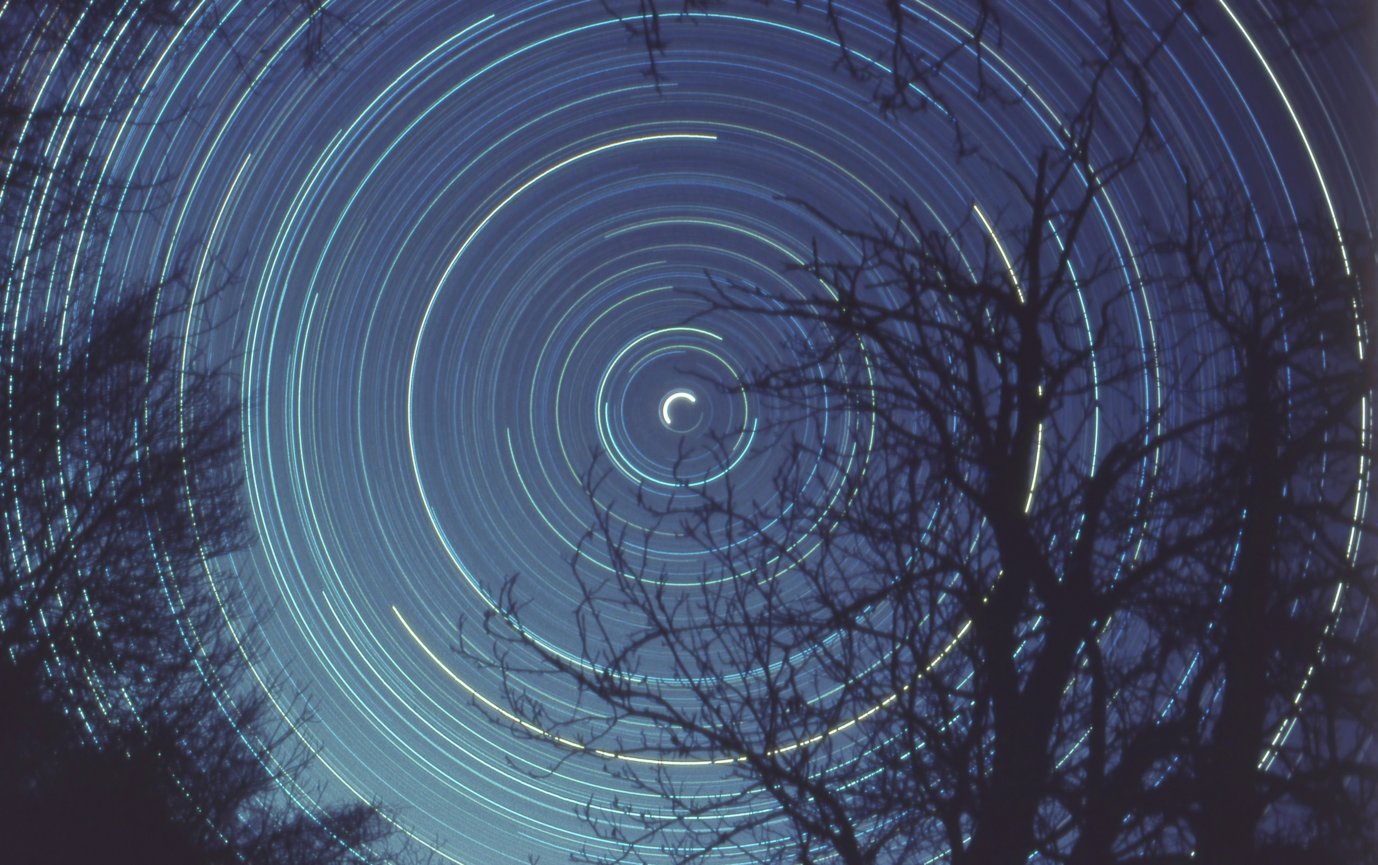
This star trail image shows the apparent movement of the stars in the night sky, which results from the Earth’s rotation around its polar axis. The trees in the foreground serve as an anchor as we turn with the Earth. The bright white semi-circle in the center of the image is the North (Pole) star – Polaris, which is located very close to the North Celestial Pole. One way to imagine that the Earth is at center of hollow crystal sphere, and the stars are embedded on this sphere, as the Earth spins on its axis, an observer on Earth sees the stars rising and setting, following an arc, because the horizon prevents the observer from the full arc for stars that are further away from the Celestial Pole. The North Celestial Pole (and its opposite the South Celestial Pole) is essentially formed by extending the line of the Earth’s axis. Capturing this image requires the photographer to take a long exposure with the camera on a tripod and pointing towards the Pole Star (North Hemisphere). In the Southern Hemisphere there is no star as close as Polaris is to the Celestial Pole, so the position of the South Celestial Pole is found using the South Cross and Pointer Stars (Alpha and Beta Centauri). Although overall the image has a slight blue tint, it does capture the varying colours of stars, it is easy to distinguish between the higher temperature blue stars and the lower temperature of the whitish stars, and even lower temperature reddish stars. The reason for this variation in colour is because higher temperature stars emit more in shorter wavelengths (bluer), compared to lower temperature stars which emit in longer wavelengths (redder).
First place in the IAU OAE Astrophotography Contest, category Star trails: Half day exposure to the north star, by Fabrizio Melandri, Italy.
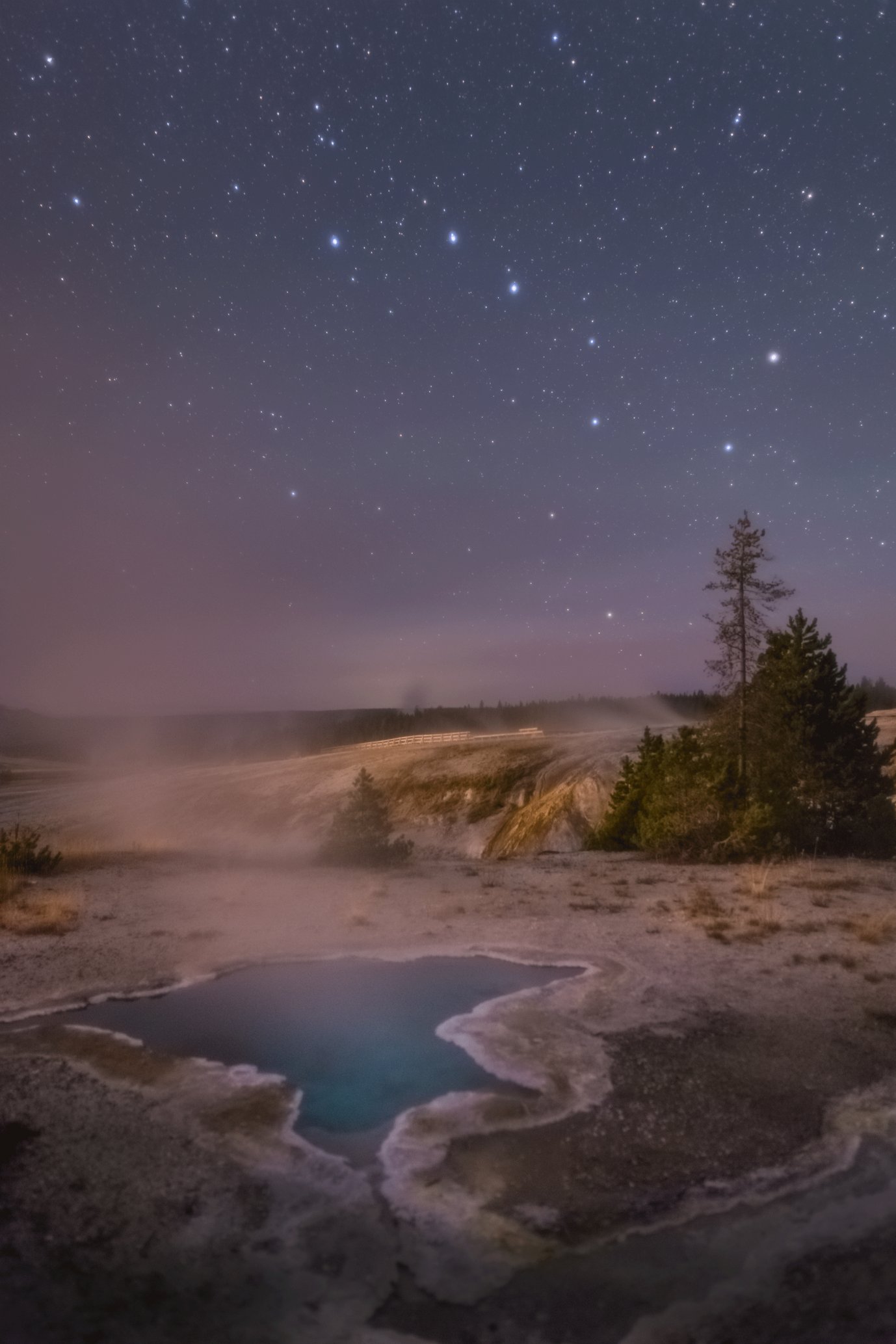
This image shows one of the most prominent and well-known asterisms of the Northern Hemisphere – the Big Dipper or the Plough. This asterism is part of the constellation from Greek mythology – Ursa Major (the Great Bear).
The Big Dipper comprises seven (eight) stars extending from the center to the right of the image. The four stars that form the “cup” of the dipper are in the shape of a trapezium just above the tallest tree towards the right of the image. These stars are Dubhe (top right), Merak (bottom right), Megrez (top left) and Phecda (bottom right). The three (four) stars that form the handle are to the left to trapezium (from right to left: Alioth, Mizar and Alkaid). Looking closely at Mizar, it is possible to see a smaller star to the top left and “touching” Mizar. This is Alcor, and with Mizar they make up the unaided-eye double-star system. However, very careful measurements have provided evidence that Mizar is in fact a quadruple system, and Alcor is a binary system. Although the names of the stars are derived from the Arabic names for the stars, different cultures have their own names for the stars.
In various cultures around the world, this asterism is associated with different objects, and furthermore, some indigenous cultures associate stories with individual stars. Constellations in addition to encompassing stories and myths of various cultures, are important navigation “tools”. The stars Dubhe and Merak, can be used to find the Pole (North) Star – Polaris (not seen in this image). Given its relationship to the Northern Hemisphere and being a circumpolar constellation (never setting below the horizon), the Big Dipper and Polaris are used on the flag of Alaska.
It is important to note that although the stars (except for the multiple star systems of Mizar and Alcor) in constellations appear to be “next” to each other, in reality the stars are at various distances from Earth and from each other.
First place in the 2021 IAU OAE Astrophotography Contest, category Wide star fields: The Big Dipper in Yellowstone, by Alex Conu, Norway.
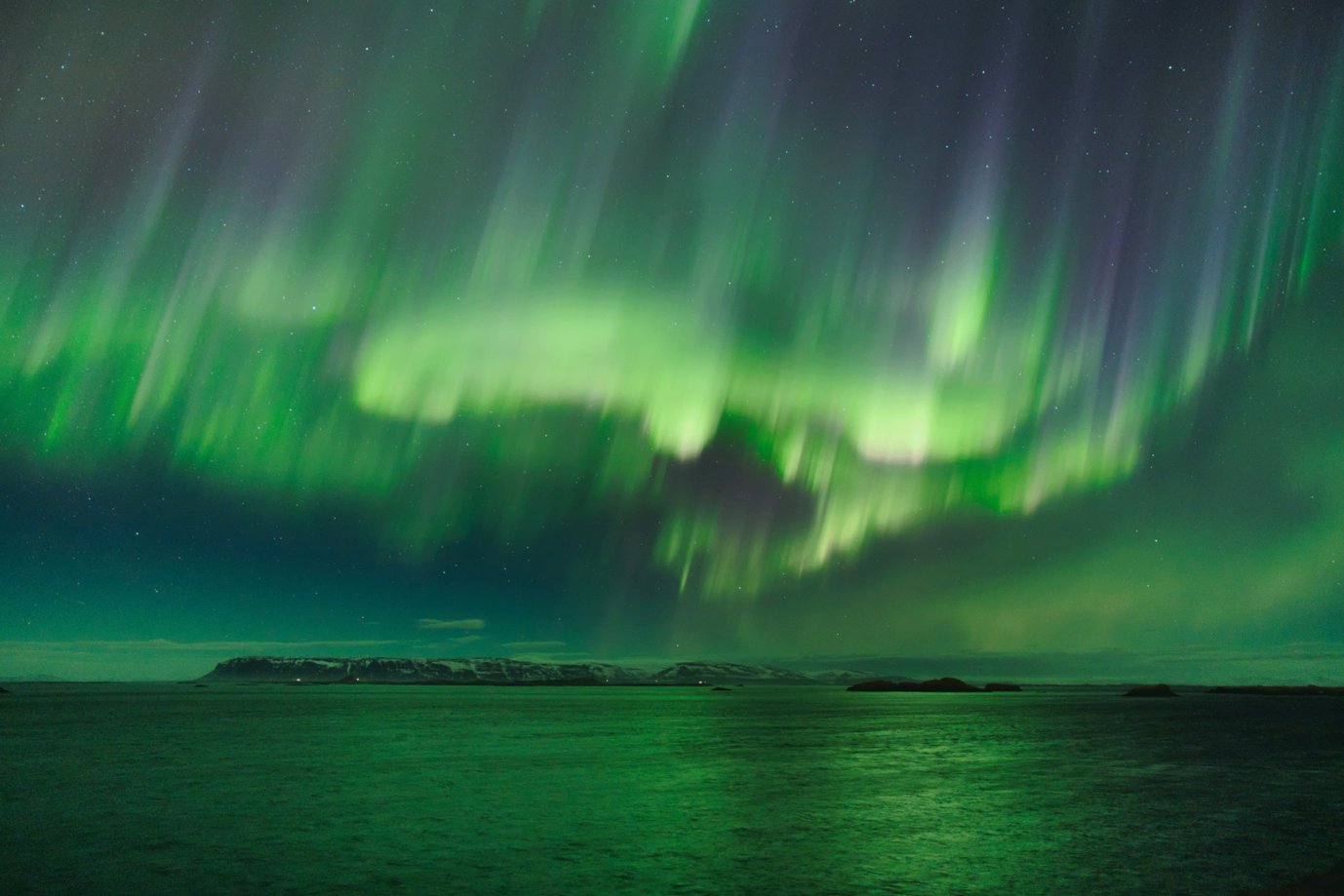
Aurorae are the result of ionisation and excitation processes in Earth's upper atmosphere, caused by charged particles from the solar wind or from coronal mass ejections. The different colours in an aurora display indicate the species of atmospheric atoms and molecules involved. The most common colour is a bright green, which, together with deep red, originates from atomic oxygen. Blue, purple and pink hues are rare and originate from molecular nitrogen. The blurred motions of the aurora caught during the exposure time of this photograph beautifully illustrate its dynamic nature. While certain forms of aurorae, like homogeneous arcs and bands or diffuse glows, can remain static for hours, others, like rayed arcs or bands (also called "curtains"), can change within seconds in shape and brightness. The reflection of the aurora in the water indicates the brightness of intense aurorae at higher latitudes.
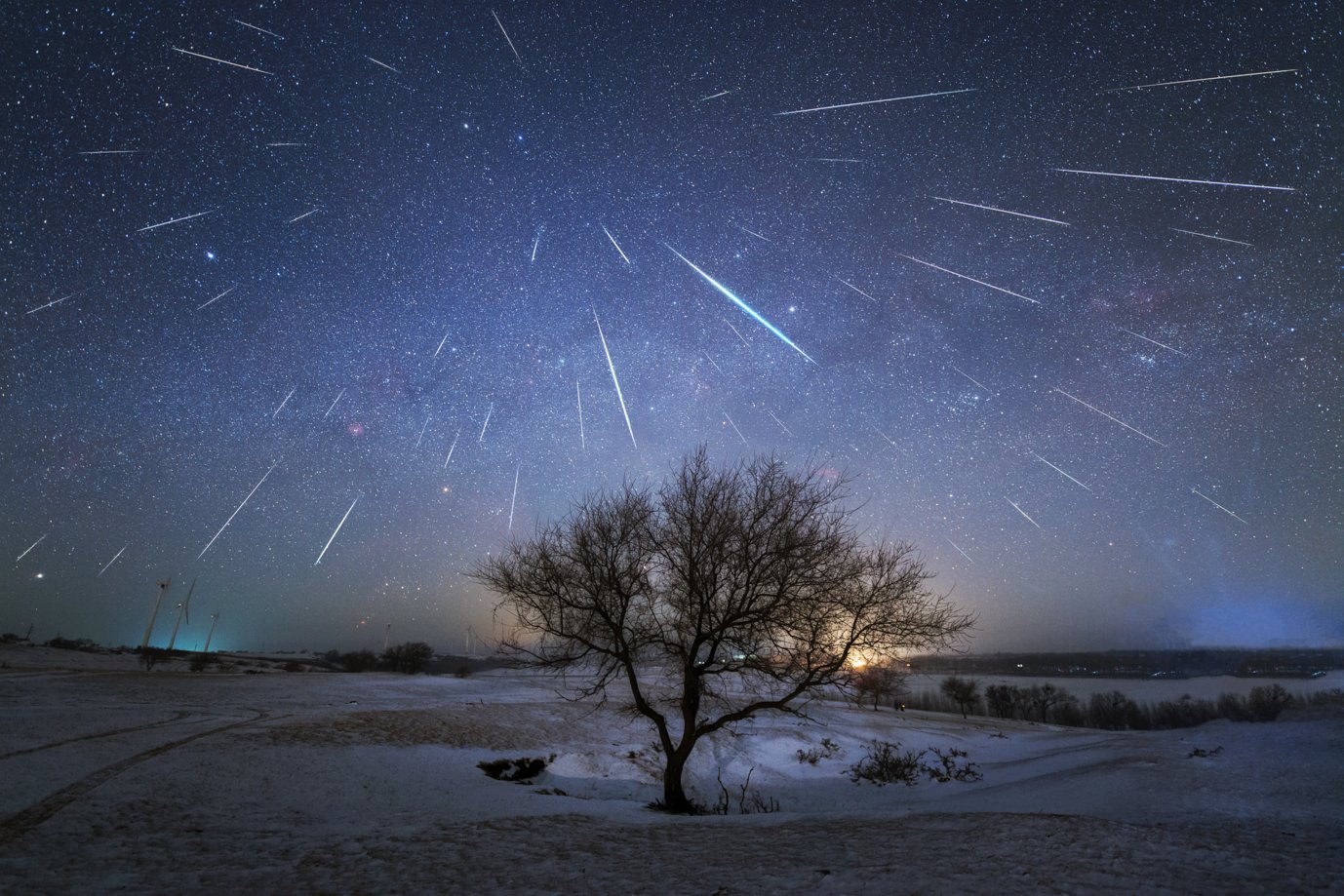
A meteor shower occurs when the Earth in its orbit around the Sun, passes through a dust trail left previously by a comet on its approach around the Sun. As the Earth enters this debris (small sand grain sized), they enter the atmosphere at high speeds and on parallel trajectories, burning completely leaving bright streaks in the sky. The streaks of shooting stars can appear and disappear in the blink of an eye, or last much longer. Due to relative motions and perspective, the shower appears to come from one single point, known as the radiant point, beautifully pictured in this image. This is similar to driving in a car on a rainy day without any wind, looking out the front window it seems that the rain is coming directly towards the window, when in fact the rain is falling vertically downwards. In this image, many streaky from shooting stars of the Geminid meteor shower captured in the sky of China in 2017 are superimposed, illustrating the position of the radiant. The Geminids are visible mid-December each year.
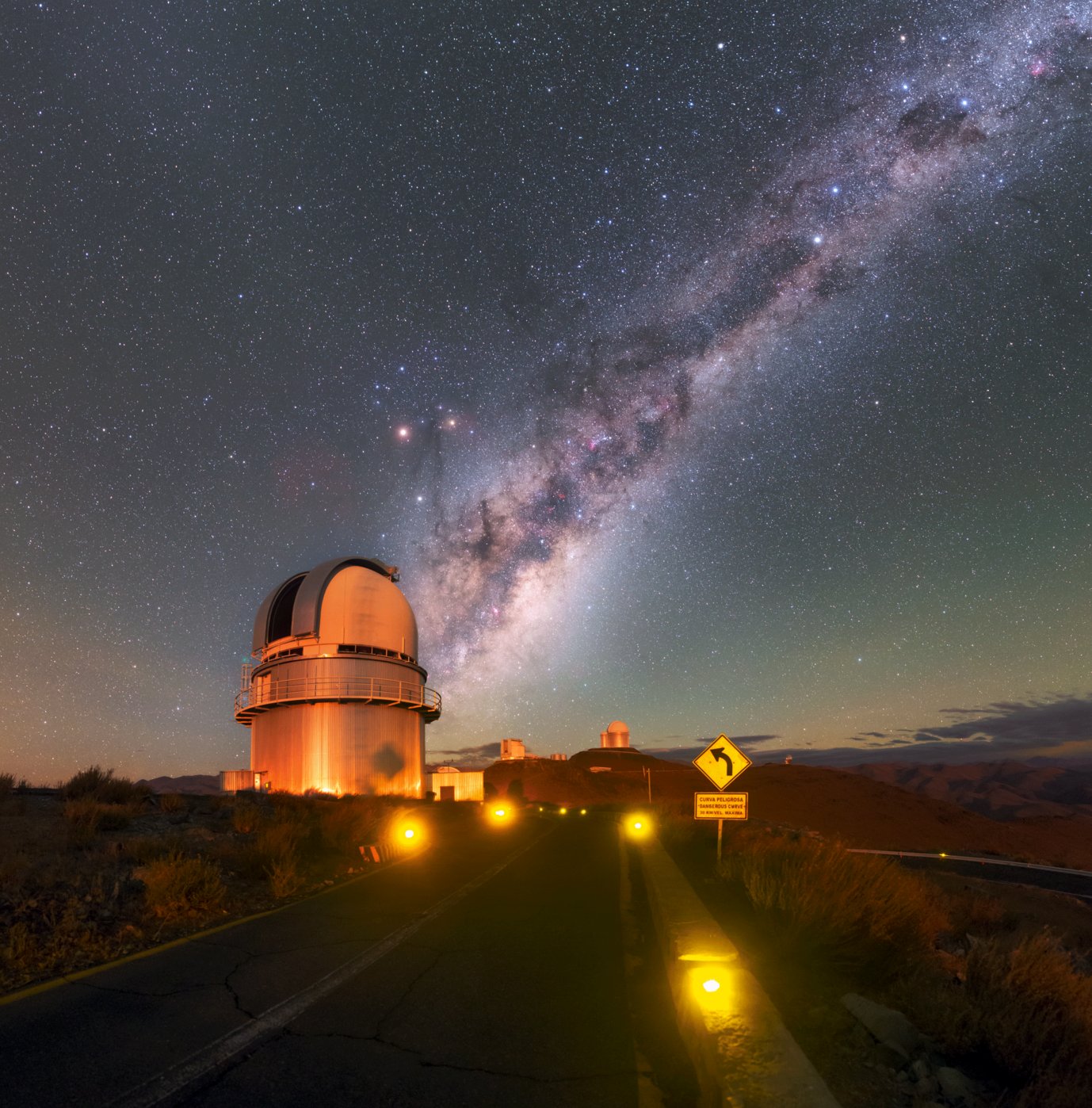
The Milky Way rises above ESO's La Silla Observatory in Chile. Located in the south of the Atacama Desert, this place offers extremely dark skies and ideal observing conditions for astronomers, far from disturbing light sources. Since it is forbidden to drive with headlights on, small yellow lights mark the edges of the road.
In the upper right corner of the image, the Southern Cross can be seen, and slightly below along the Milky Way, the Alpha Centauri star system can be seen: this star system contains Proxima Centauri, the closest star to our solar system. Above the dome of the Danish 1.54m telescope in the foreground are the planets Mars and Saturn, and just to the left of the dome, the glow of comet 252P/Linear can be seen.

